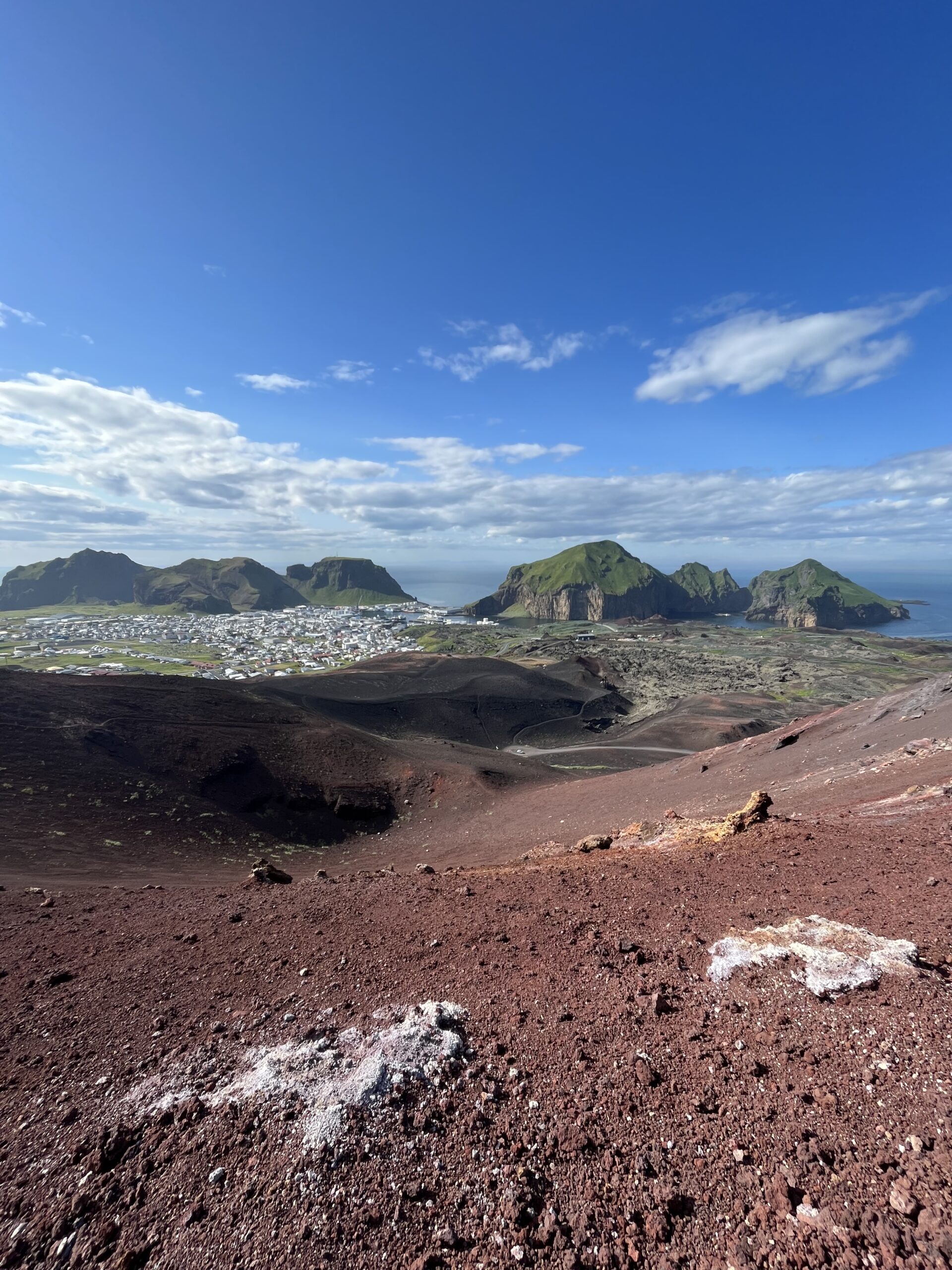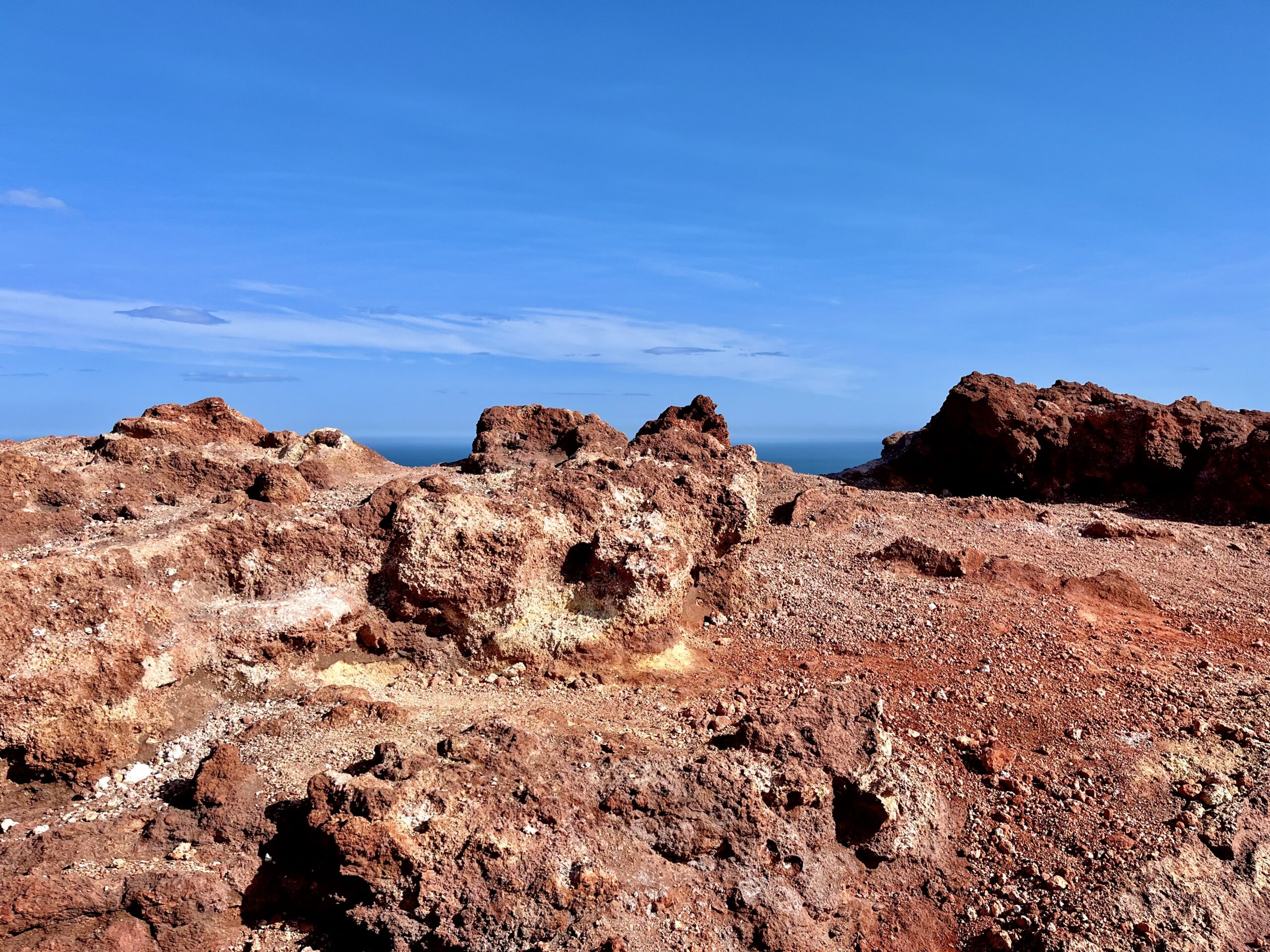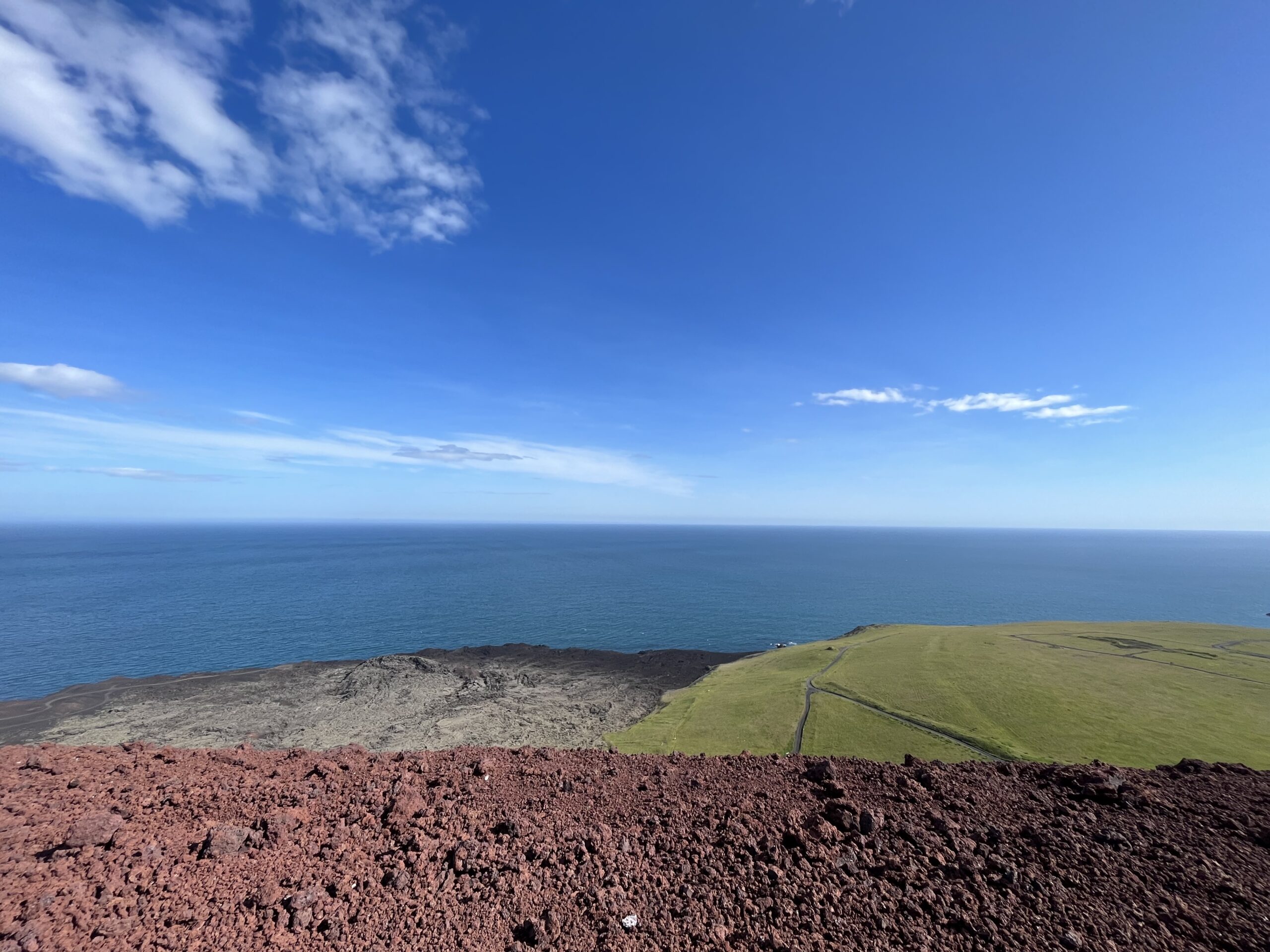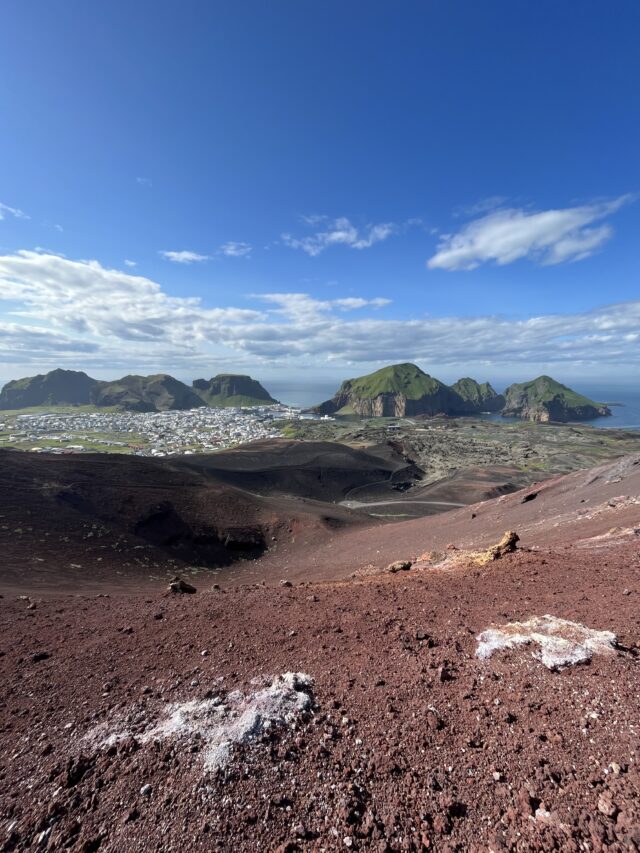Summary
I just returned from Iceland a few days ago. During my time there, I stayed in a hostel in Reykjavik and commuted to various hiking and other scenic locations via bus, then took a ferry to Heimaey Island, where I stayed for three days. The goal of flying to Iceland was to immerse myself in its quintessential sublime nature, which includes volcanoes, waterfalls, midnight sunsets, and vast mountainscapes, while engaging in slow looking – a museum-originated educational practice that enables cognitive opportunities for meaning-making and critical thinking. Coincidentally, I ended up seeing an erupting volcano as I was making my way home on the bus from Heimaey Island and on my way to the airport. I documented my solo experiences viewing these sights in my journal and via photography. I also interviewed Gisli Paalson, an anthropologist and former professor at the University of Iceland, about important attitude changes humans need to undergo in order to heal their relationship with the environment; drivers of environmental attitudes; and the state of environmental protection and consciousness in Iceland. He stressed that the following should be priorities when implementing attitude changes: slowing down consumption and production; re-ordering our tastes; and omitting economic growth as a conditioned reflex.
We also discussed how childhood experiences undeniably shape interests and attitudes towards the environment. I was reminded of this inquiry when living on Heimaey Island, where I noticed groups of school-aged children walking around with rakes and trash bags every day, tidying the streets and landscape. Speaking with a Heimaey local reinforced my assumption that Icelandic children learned to take care of their environment from a young age – she said that parents, including herself, make an effort to teach their children to respect the environment and recognize its beauty. I noticed a humility within Iceland that is lacking in the US; from the way people dress to the architecture of the buildings, many details indicate that the natural environment and its changing conditions are what life is centered around. Rather than making humans’ presence explicitly known, our existence is thoughtfully integrated in the landscape, taking up just enough space without altering it too drastically.
As my trip continued, I became increasingly grateful that I was traveling solo. I noticed that experiencing the sublime in nature in solitude amplified its sublimity. When too many tourists were around or I was engaged in conversation with another backpacker who was pausing to take photos for Instagram, I was removed from the present moment and sucked into whatever dialogue was happening between us. Solitude allowed for mindful observation for whatever duration I desired, allowing for ample reflection, note-taking, and emotional investment in the scenery I was witnessing. During these moments, I often thought about the differentiator between Western and Eastern notions of the sublime – the former associating it with the feeling of alienation and the latter associating it with a sense of unity with the world. I resonated with the latter.
The combination of personal experiences of the sublime in nature and discussions with locals and Gisli Paalson inspired my creative component of this research project: a guide to the sublime. In it, I’ve decided to explain the origins of the sublime in philosophy, its relationship to the natural environment, why it’s significant, and how we can find the sublime in our everyday lives. I realized that the underlying appeal of learning to witness the sublime is the inevitable practice of mindfulness, slowing down, and deep observation – all actions that we can benefit from amid a bustling, work-focused lifestyle.



